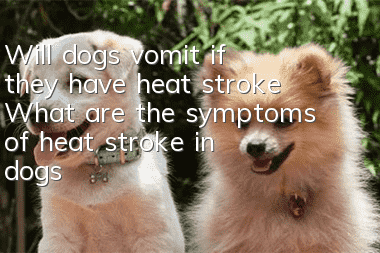What to do if your dog has heat stroke? Here are some tips you must know

Rescue methods for dog heatstroke
The first aid principles are: try to cool down, maintain cardiopulmonary function, and correct water-salt metabolism and acid-base balance disorders.
1. Cooling down is the key to the treatment of this disease. The sick dog should be moved immediately to a cool and ventilated place or an air-conditioned room. The dog should be poured with cold water, enema with cold salt water, or inject water on the head, neck, and armpits. Place ice packs on the lower body and inner thigh. When the dog's body temperature drops below 38.5°C, cooling should be stopped to prevent collapse.
2. For cases accompanied by dehydration, intravenous infusion of normal saline or 5% glucose normal saline should be used first to correct acidosis and restore electrolyte balance.
3. For cases with pulmonary congestion and pulmonary edema, 1 to 2 mg of dexamethasone per kilogram of body weight should be injected intravenously or intramuscularly immediately, and appropriate amount of bloodletting can be followed by fluid rehydration.
4. To improve cardiopulmonary function, 7.8 to 31.2 mg of nicosamide per kilogram of body weight can be given by intramuscular or intravenous injection.
Causes of heatstroke in dogs
Dogs’ skin has underdeveloped sweat glands. They only have sweat glands in a few parts such as their paw pads, so they cannot fully regulate their body temperature. This disease can be caused by the scorching heat of midsummer, direct sunlight, long-term exposure to the sun or excessive training. Young dogs, old dogs, and obese dogs have low tolerance and are more susceptible to disease. Symptoms of heatstroke in dogs
The sick dog suddenly became depressed, slow to react, unsteady gait, weak limbs, and increased skin temperature. Some experienced short-term excitement and restlessness, rushing around, but soon turned into a suppressed state; some suddenly fell to the ground, in a coma, with loss of consciousness, dilated pupils, and swimming-like movements of their limbs; some suddenly had violent fits Convulsions or convulsions, rapid death.The body temperature of sick dogs rises to above 40℃, or even exceeds 42℃. Symptoms of heart failure such as tachycardia, arrhythmia, weak pulse, venous distention, and cyanosis occur. When accompanied by pulmonary congestion and pulmonary edema, it is highly difficult to breathe, gasping for air, eyeballs protruding, and pink bubble-like fluid flows from the nostrils. If not rescued in time, death will occur quickly.
- Please be careful when raising these types of dogs. It will be too late to regret after raising them.
- What is the difference between a Poodle and a Bichon Frize? What is the difference between a White Poodle and a Bichon Frize?
- What should I do if my dog has a runny nose? What medicine should I take if my dog has a runny nose?
- What should dogs not eat? These foods are very harmful to dogs.
- How to make homemade dog food, nutritious and healthy
- How does a Greyhound walk every day? How does a Greyhound walk to get a perfect body shape?
- What is the function of a puppy’s tail? Do you know these functions of a puppy’s tail?
- What should dogs pay attention to when eating fruits? Dogs must pay attention to the following points when eating fruits!
- Can dogs have diarrhea? Can they take a bath? Why do dogs have diarrhea?
- Are pesticides harmful to dogs? Pesticides can poison dogs and kill them!



